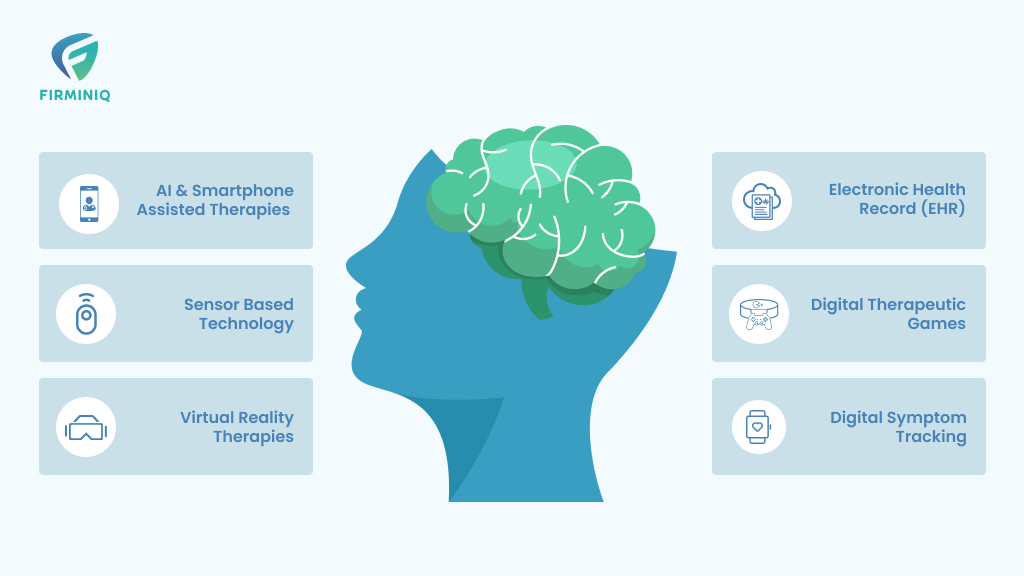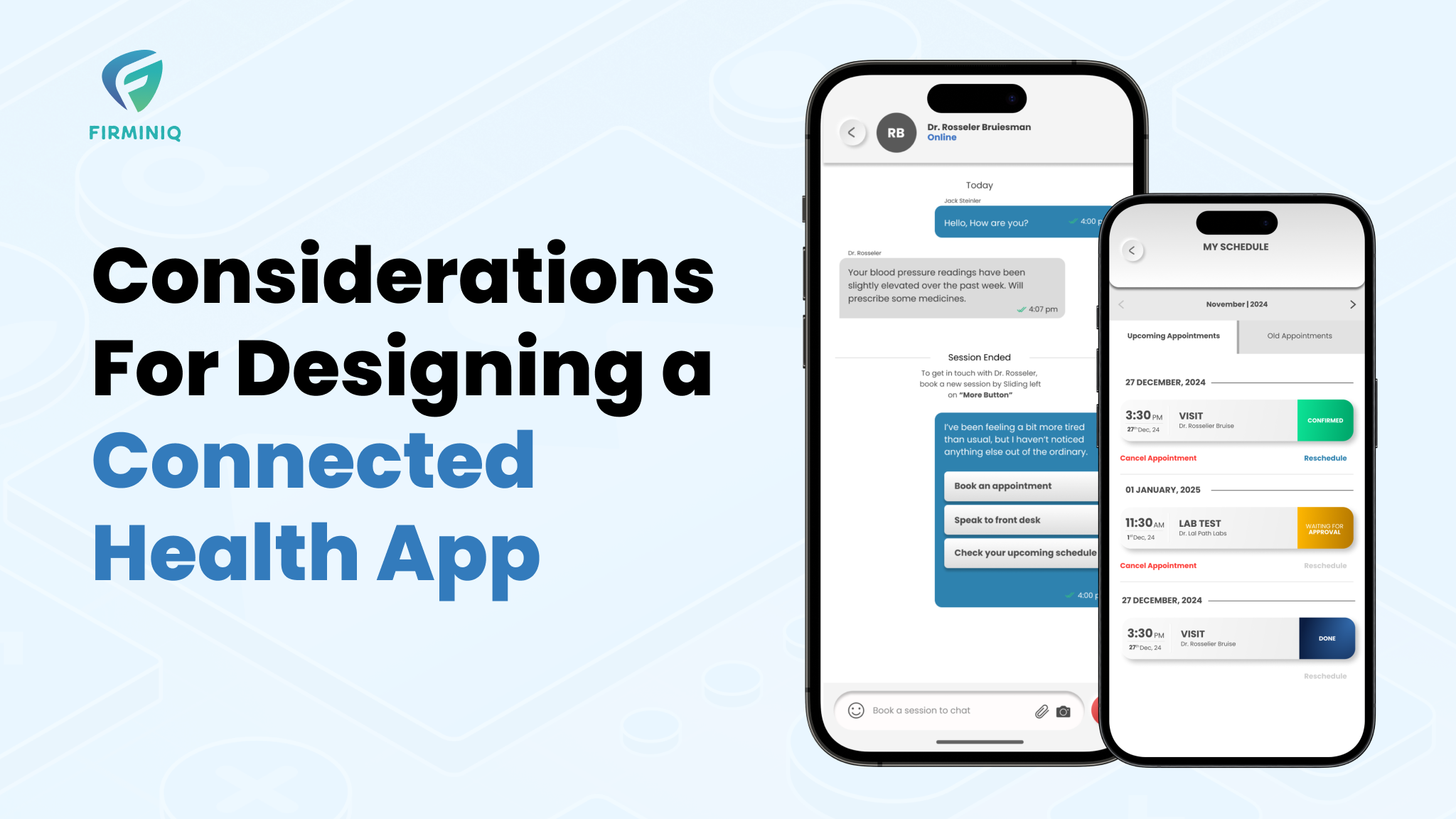Depression, anxiety, and other behavioral conditions are one of the leading causes that significantly impact the quality of life and overall well-being of an individual. These conditions are the major cause of illness among the young people that leads to suicide- Suicide is the fourth leading cause of death among 15- to 19-year-olds.
Also, as per the World Health Organization, depression will be one of the leading causes of disease burden by 2030.
As a leading concern it’s time to acknowledge that the mental health issues existed before the pandemic but were highlighted more after because of technological advancement. “More than 8 in 10 (84%) psychologists who treat anxiety disorders said they have seen an increase in demand for anxiety treatment since the start of the pandemic, compared with 74% a year ago.”- American Psychological Association
Technological innovation plays a significant role in offering support, the right tools, resources and intervention to support such diseases. From smartphone apps to wearable devices, there are a broad range of tech-innovations that are emerging and continue to support mental health proactively.
Here is a blog that will help you explore ways in which tech-based innovations are helping to address mental health concerns.
Tech-Innovations that are Changing Core of Mental Health
As already discussed above, with the advancement in technology anyone experiencing anxiety, depression and other mental disorders can take control of their mental health. Let us focus on the notable tech-innovations that are making an impact.
1. AI (Artificial Intelligence) and Smartphone Assisted Therapies
Artificial Intelligence and smartphone assisted therapies are one of the most innovative approaches that have been growing rapidly over the years. AI technology relies on natural processing and machine learning and involves usage of chatbots and virtual assistants to assist patients in the best possible ways. The algorithms understand the inputs, understand their concern, and initiate the conservation allowing patient to make more insightful decisions about diagnosis, treatment, and choice of therapist.
Examples include Woebot, that has been helping patients practice CBT strategies and manage their symptoms between appointments.
Whereas smart phone assisted therapies involve usage of mobile applications that are specifically designed to support the mental health conditions treat patients. The app offers specific features including mood tracking features, patient voice analysis and speech patterns for warning signs of emotional distress, guided exercises, and consultation with therapists. One such example include:
Woebot
Location: San Francisco, California
Founder: Alison M. Darcy
Founded In: 2017
Woebot is an AI-powered chatbot that offers accessible and personalized support for mental health and well-being. No matter if the user is feeling stuck, anxious or depressed, the platform empowers the user to keep moving at his own pace. It uses cognitive behavioral therapy techniques and natural language processing for a conversational experience via mobile apps. They don’t directly integrate with connected health devices but use data from the user’s smartphone and offer personalized recommendations.
2. Sensor Based Technology
Mental health has seen a lot of advancements in sensor technology that further help with quick diagnosis and monitoring of various health conditions. Stress tracking wearables employ different sensors that help measure stress level and offer feedback in real-time. The wearable devices can monitor the heart rate, sleep patterns and track stress levels. Wearables offer features and functionalities for personalized stress management and help individuals.
One of the examples of latest advancements in wearable devices and sensors includes digital pills. Also, known as smart pills, these sensors can track the medication adherence offer data and offer data when the pill is ingested. This technology plays a crucial role and is quite beneficial for individuals with mental health conditions who rely on medication as part of their treatment.
Another example includes mental health wearable called an Electroencephalogram. Brain activity can be measured by using electroencephalography (EEG) and offers feedback on the mental state and stress level.
3. Virtual Reality Therapies
Virtual reality creates an environment that boosts user engagement while making it one of the promising tools in mental health. Virtual therapies simulate the real-world scenarios and conditions and allow users to experience a sense of presence with the three-dimensional environment computer generates.
The parallel reality it creates for the users is interactive and immersive and allows users to fully experience features like head-mounted displays, gesture sensing gloves, synthesized sounds making it a promising tool.
“A new study published in the Journal of Medical Signals and Sensors has been added to research showing that virtual reality (VR) can be helpful to help treat claustrophobia. The software in this study simulated an elevator moving to the tenth floor and a magnetic resonance imaging (MRI) device. Researchers found that it was helpful to reduce anxiety and was accessible and easy for people to use it.”
Virtual reality exposes the individuals and triggers situations like anxiety, post-traumatic stress disorders and others. From exposure therapy to cognitive behavioral therapy, mindfulness and relaxation, social skill training, pain management, virtual reality therapies can be an immense help for mental disorders.
4. More Connected, Data-Based Electronic Health Record (EHR)
A more connected, data-based electronic health record is another advancement that has comprehensive information about the patient’s history, and their mental health. Traditionally, EHR was a closed system with limited interoperability. However, with the growing recognition, there is a growing open and interconnected system, to provide electronic access via third-party APIs and standardize the core patient data for interoperability.
Canvas Medical is an example of a company that provides open platforms for connecting best-of-class applications within the healthcare industry, including EHR systems. The organization recognizes the interoperability value and creates an ecosystem where the healthcare provider leverages specialized apps along with their EHRs.
5. Digital Therapeutic Games
These are the prescription video games that are emerging in the form of mental health treatment and combine gameplay with therapeutic interventions. It is one of the exciting examples of technological tools that help both children and adults to drive improvements in mental health conditions.
“Research was carried out to review the evidence about video game-based therapeutic intervention for people diagnosed with depressive disorders. And overall, video game-based interventions were useful and effective in reducing symptoms of depressive disorders. Seven of the studies were published in the last 5 years, which reflects the increased research interest in video game-based interventions for depression.”- Springer
Attensi and Dr. Raknes developed a learning simulation, Helping Hand that was successfully used to prevent mental health disorders in adolescents. It encourages life-changing scenarios that reinforce positive decisions for them, facilitating changes in their thought process, feelings, and a sigh of relief.
6. Digital Symptom Tracking
Tracking mental health symptoms manually can be a time-consuming task and traditionally patients used paper booklets to track their symptoms. Moreover, every time patients visit the physician, they report new signs, and the treatment process elongates. Whereas digital symptom tracking tools, the care provider can record the symptoms in an electronic health record (EHR). The AI algorithm analyzes the data, identifies patterns, and warns patients of their health condition.
By utilizing digital symptom tracking tools, individuals can gather data, gain insights into their mental health conditions, and collaborate effectively with healthcare providers. This information can inform treatment plans, facilitate discussions during therapy sessions, and enable individuals to take an active role in managing their mental health.
Examples include T2 mood tracker, a mobile application developed by the US Department of Defense to monitor and track mood changes. Users with depression and other mood disorders can record their symptoms, emotions and generate graphs for progress tracking.
Conclusion
COVID-19 was one of the primary reasons healthcare organizations and service providers adopted new technological tools out of necessity. And above-mentioned are some of the crucial advancements and innovations that seamlessly help users tackle mental health conditions.
Connected and wearable devices play the most crucial role in addressing mental health concerns. Read out the blog: How Connected Health Solutions Are Playing a Vital Role in Mental Health and know it yourself.
As a leading organization, FIRMINIQ offers robust connected healthcare apps for startups working to tackle mental health conditions. Reach out to us for more details!






